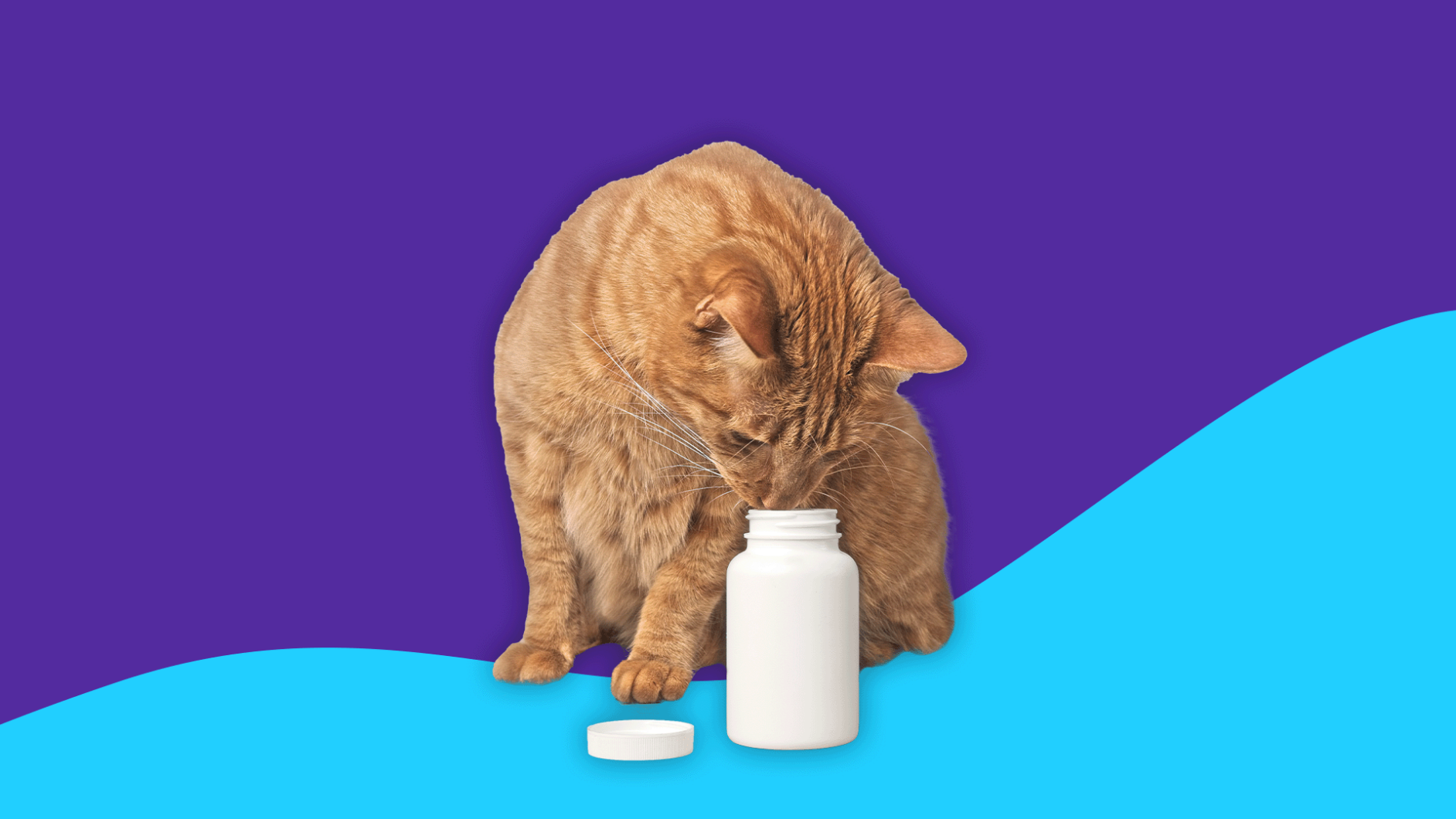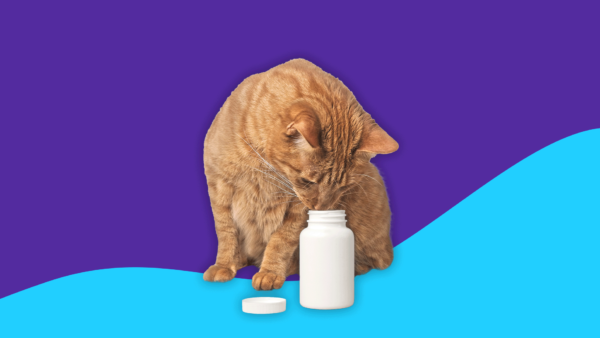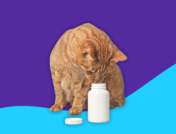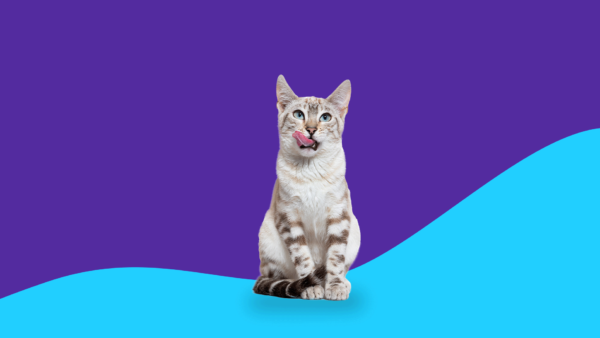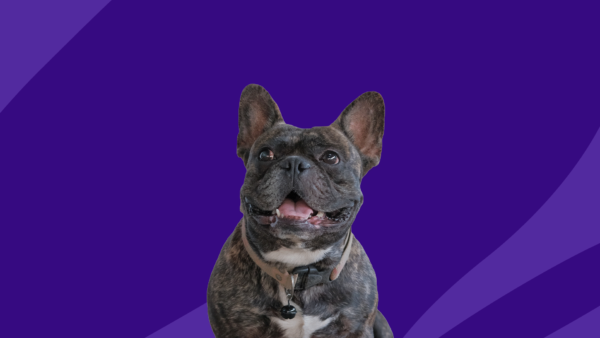Key takeaways
Trazodone is used to treat situational anxiety in cats, but usually as a second option when other more preferred drugs don’t work for some reason.
The standard trazodone dosage for cats has yet to be determined, but the recommended starting dose is 25 mg. Doses as high as 100 mg have been safely used to provide sedation in cats.
The most common side effects of trazodone in cats are sleepiness, loss of coordination, nausea, vomiting, and appetite changes.
Do not give trazodone to cats if they are allergic to trazodone or being given a monoamine oxidase inhibitor (MAOI).
Trazodone is a serotonin reuptake inhibitor (SARI) used to treat people with depression. In veterinary care, trazodone is commonly prescribed to treat dogs with anxiety-related behavior issues and sometimes as a sedative before vet visits. It’s not as widely used in cats because it hasn’t been as well studied as in dogs. Most veterinarians sometimes use trazodone in cats, primarily to provide sedation and some anxiety relief when cats undergo stressful events. While both Plumb’s Veterinary Manual and the Merck Veterinary Manual provide standardized trazodone dosages for dogs, neither resource gives definitive guidance to its use in cats.
RELATED: Save up to 80% on trazodone
What is trazodone used for in cats?
While trazodone is commonly used in dogs, the same is not true for cats. Veterinarians mainly use it as a sedative when a cat has to undergo a stressful situation such as a veterinary visit, hospitalization, thunderstorms, or travel. A few days after an operation, it may also be prescribed to keep the cat quiet while it heals.
However, a veterinarian is more likely to use gabapentin to sedate a cat because it’s been well-studied in cats and proven effective and safe. Some veterinarians may add a trazodone dose to the gabapentin dose in exceptional cases where the gabapentin doesn’t sufficiently calm the cat’s behaviors.
In dogs, trazodone is used as an add-on daily medication to calm anxiety-related behavior problems such as aggressiveness or fearfulness. However, trazodone as a long-term anxiety medication has not been researched in cats, so there are no published protocols. A veterinarian can always prescribe trazodone for anxiety, but probably won’t. Most veterinarians start with a selective serotonin reuptake inhibitor (SSRI) like Reconcile (fluoxetine). Tricyclic antidepressants are also used as an anxiety treatment for cats. Tricyclic antidepressants used in cats include amitriptyline, clomipramine, imipramine, or doxepin since these drugs have dosage guidelines.
RELATED: How trazodone can help anxious dogs
Situational anxiety (sedation)
For cats, veterinarians only have research and recommended doses for using trazodone as a sedative. In these cases, the cat typically gets one dose about two hours before the event. Other stressful situations that may require sedation include hospitalization, post-operative confinement, and travel. However, gabapentin is the drug of choice to sedate a cat before stressful events.
For trazodone to effectively calm cats, it must be given about two hours before the cat experiences stress. For instance, if the cat needs sedation for vet visits, the pet parents should give the trazodone dose two hours before putting that cat in a carrier for transport. They will have to give their cat a tablet. If this proves too hard, the vet can provide a liquid version for easier dosing.
RELATED: Gabapentin for cats
Is trazodone safe for cats?
Trazodone is not well-studied in cats. In two studies using trazodone to calm cats before and during a vet visit, trazodone doses of 50 mg, 75 mg, and 100 mg were effective and didn’t cause any side effects that would cause worry.
Side effects of trazodone in cats
The most common side effects of trazodone in cats are relatively mild. They include:
- Sleepiness
- Poor coordination
- Nausea, vomiting, diarrhea
- Appetite changes
- Agitation
- Changes in behavior
Among potential side effects, the most concerning is serotonin syndrome. Serotonin is a chemical that transmits signals between nerves. Trazodone is a serotonin antagonist and reuptake inhibitor (SARI). That means the drug increases active serotonin levels at the connections between nerves throughout the central nervous system. That’s the chemistry behind its effects. However, medications like trazodone can overdo it sometimes, resulting in too much active serotonin at the nerve connections. That results in a host of problems collectively called serotonin syndrome. Fortunately, it’s not likely to happen if a cat or dog only takes one drug that increases serotonin, like trazodone. It’s more of a risk if other serotonin-increasing drugs are taken along with trazodone.
Serotonin syndrome can be very serious and even fatal, so get emergency veterinary treatment for the cat if you notice a cluster of symptoms, including:
- Vomiting
- Diarrhea
- Seizures
- Sensitivity
- Depression
- Pupil dilation
- Vocalization
- Disorientation
- Loss of coordination
- Heightened reflexes
Interactions of trazodone with other pet meds
Like all drugs, trazodone could cause problems when combined with other medications.
Veterinarians are most concerned about serotonin syndrome, a potentially severe side effect that is most likely to happen when drugs like trazodone are combined with other drugs that work the same way. They worry most about combining trazodone with other types of antidepressants. Still, anti-anxiety medications, narcotic pain relievers, and the acid reflux drug metoclopramide can cause serotonin syndrome when combined with trazodone.
Because trazodone makes a cat sleepy, veterinarians are cautious about combining it with other drugs that make the cat sleepy. These include sedatives or narcotic pain medications like tramadol. However, cats may receive several sedatives when they undergo surgery or are hospitalized. That’s normal, but veterinary professionals will monitor the cat.
Some drug interactions increase the risk of trazodone side effects. These include some antifungal drugs, macrolide antibiotics, and phenothiazines (a type of antipsychotic).
Nonsteroidal anti-inflammatory drugs (NSAIDs) might also be a problem. Cats aren’t given human NSAIDs like aspirin or ibuprofen, but they can be prescribed robenacoxib or meloxicam for osteoarthritis or surgery pain. Trazodone could theoretically increase the risk of digestive system complications from NSAID treatment.
Trazodone dosage for cats
Dosages have not been standardized, but Plumb’s Veterinary Manual suggests a starting dose of 25 mg for a cat that needs sedation before a veterinary visit, post-operative confinement, hospitalization, or other stressful event such as traveling. The dose may need to be increased if the cat remains too stressed.
Another suggested dosage is 10 mg per kilogram of body weight. That works out to 40–50 mg of trazodone for an average healthy cat.
At least one study has shown that doses of 50 mg, 75 mg, and 100 mg of trazodone can safely and effectively sedate a cat before veterinary procedures as measured by how much the medicine reduces the cat’s activity.
Another placebo-controlled study found that 50 mg doses were effective and safe for calming cats before a vet visit. This study, too, was limited in that only 10 cats were involved.
To be effective, pet parents must give the cat the trazodone dose about two hours before transporting the cat. The medicine is given orally as a tablet, but liquid versions can be prepared to make dosing easier.
For hospitalized cats or those confined after surgery in a vet’s office or animal hospital, veterinary professionals will administer trazodone doses. Based on research on dogs, veterinarians avoid giving intravenous injections of trazodone to animals.
Can cats overdose on trazodone?
There is no maximum trazodone dose for cats. Research has determined that doses as high as 100 mg are safe for cats.
It’s unlikely that a pet owner will give a cat too much trazodone unless they give it on their own. Currently, the only use for trazodone in cats is to sedate a cat before vet visits, so the vet will probably give owners only one or two doses.
Trazodone overdoses have not been studied in cats. When a person overdoses on trazodone, the effects are generally mild, usually sleepiness and nausea. In the worst situations, a trazodone overdose can throw off the heart’s rhythm, sometimes badly enough to cause death. It can also slow down breathing to the point where breathing stops altogether.
If a dog is given too much trazodone, it can develop symptoms very similar to serotonin syndrome, a potentially serious side effect of drugs like trazodone. Symptoms of a trazodone overdose in animals include:
- Depression
- Loss of coordination
- Disorientation
- Hypersensitivity
- Frequent peeing
- Changes in heart rate
- Changes in blood pressure
- Tremors
- Seizures
If a cat is given too much trazodone or shows unusual symptoms after being given a dose, contact the ASPCA Animal Poison Control Center or a local emergency veterinary hospital.
Can I give my cat trazodone every day?
Veterinarians usually don’t prescribe daily trazodone for cats.
Instead, veterinarians use trazodone in cats to calm them temporarily in extraordinary situations like a veterinary examination or travel. The cat may only need one dose or, at most, a few days of trazodone doses.
The veterinary literature only discusses trazodone dosages for short-term situational sedation. There are no dosing or monitoring protocols for treating cats with daily doses of trazodone. If a veterinarian prescribes trazodone as a daily medication, ask the veterinarian why trazodone is the best choice and if there are alternatives. Follow all the dosing instructions given by the vet.
How to give your cat trazodone
Veterinarians usually ask cat owners to give their cat a single dose of trazodone. Some situations, like travel over several days, may require a few doses.
If administering a tablet is too difficult, ask the veterinarian for an oral suspension. This could be done at the vet’s office or a compounding pharmacy.
Give the trazodone dose with food at least two hours before the anticipated stressful situation, such as putting the cat in a carrier to go to the vet’s. The medicine takes about two hours to reach its peak effects in a cat.
Most pet owners shouldn’t worry about missing a dose since only one dose is usually required. If that dose is missed, give it to the cat as soon as you remember. The sedative effects will kick in late, but the dose will still help calm the cat.
Trazodone alternatives for cats
Trazodone is not the drug of choice for sedating a cat. It’s not widely studied and doesn’t have standardized dosage protocols. The first-line choice is gabapentin because of its effectiveness and safety. If gabapentin is not an option, other alternatives include clonidine, acepromazine (a tranquilizer), and benzodiazepines such as lorazepam or midazolam. Some of these drugs are more powerful sedatives than trazodone and may be more likely to cause adverse effects.
Summary
Though not the drug of choice, trazodone is commonly used to calm or sedate a cat before veterinary visits, veterinary procedures, or other anxiety-inducing situations. It works very well and has minimal side effects. Because there are risks, trazodone should only be given to a cat under the direction of a veterinary professional.
Sources
- Drug dosages for behavioral therapy in dogs and cats, Merck Veterinary Manual
- Efficacy of a single dose of trazodone hydrochloride given to cats prior to veterinary visits to reduce signs of transport-and examination-related anxiety, Journal of the American Veterinary Medical Association
- Medicine to ease the feline mind, DVM360
- Sedation protocols for cats, Behavioural Referrals Ltd
- Trazodone, Plumb’s Veterinary Briefs
- Trazodone hydrochloride tablet prescribing information, NIH National Library of Medicine
- Trazodone in dogs and cats, Clinician’s Brief
- Trazodone overdose manifesting as hypotension and QT prolongation, Cureus
- Trazodone toxicosis, ASPCApro
- Use of oral trazodone for sedation in cats: A pilot study, Journal of Feline Medicine and Surgery



